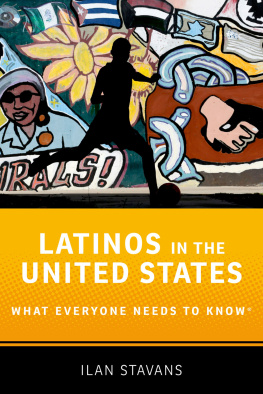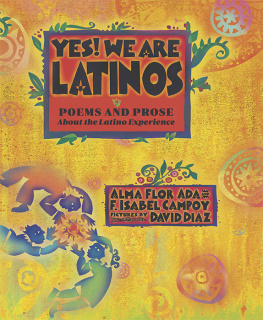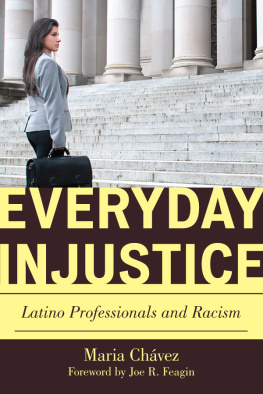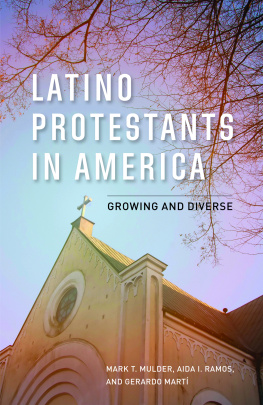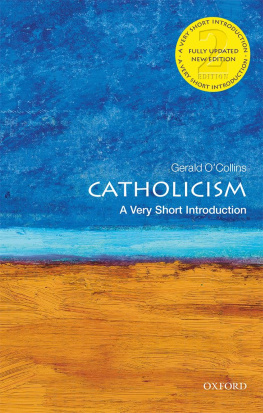Latino
Catholicism
Transformation in
Americas Largest Church
(Abridged Version)
Timothy Matovina

Imprimi Potest:
Harry Grile, CSsR, Provincial
Denver Province, The Redemptorists
Published by Liguori Publications
Liguori, Missouri 63057
To order, call 800-325-9521
www.liguori.org
Copyright 2013 Timothy Matovina
All rights reserved. No part of this publication may be reproduced, stored in a retrieval system, or transmitted in any form or by any meanselectronic, mechanical, photocopy, recording, or any otherexcept for brief quotations in printed reviews, without the prior written permission of Liguori Publications.
Library of Congress Cataloging-in-Publication Data
Matovina, Timothy M., 1955
Latino Catholicism : transformation in Americas largest church (abridged version) / Timothy Matovina.First Edition.
pages cm
1. Hispanic American CatholicsReligious life. 2. Catholic ChurchUnited States. I. Title.
BX1407.H55M38 2013
282.7308968dc23
2013023692
pISBN: 978-0-7648-2450-0
eISBN: 978-0-7648-6891-7
Liguori Publications, a nonprofit corporation, is an apostolate of The Redemptorists. To learn more about The Redemptorists, visit Redemptorists.com.
Printed in the United States of America
17 16 15 14 13 / 5 4 3 2 1
First Edition
CONTENTS
CHAPTER 1
Remapping American Catholicism
CHAPTER 2
Integration
CHAPTER 3
Hispanic Ministry
CHAPTER 4
Parishes and Apostolic Movements
CHAPTER 5
Worship and Devotion
CHAPTER 6
Passing on the Faith
EPILOGUE
Transformation in Americas Largest Church
ABBREVIATIONS
| ACE | Alliance for Catholic Education |
| ARIS | American Religious Identification Survey |
| CARA | Center for Applied Research in the Apostolate |
| CCR | Catholic Charismatic Renewal |
| CNSH | Comit Nacional de Servicio Hispano |
| HCAPL | Hispanic Churches in American Public Life |
| IPLA | Instituto Pastoral Latino Americano |
| La Red | National Catholic Network de Pastoral Juvenil
HispanaLa Red |
| MACC | Mexican American Cultural Center/
Mexican American Catholic College |
| NCCB | National Conference of Catholic Bishops |
| NCCB/SHA | NCCB Secretariat for Hispanic Affairs |
| NCCHM | National Catholic Council for Hispanic Ministry |
| PADRES | Padres Asociados por los Derechos Religiosos,
Educativos, y Sociales (Priests Associated for
Religious, Educational, and Social Rights) |
| PARAL | Program for the Analysis of Religion Among
Latinos |
| PFRPL | Pew Forum on Religion and Public Life |
| PHC/PFRPL | Pew Hispanic Center and
Pew Forum on Religion and Public Life |
| PICO | Pacific Institute for Community Organizations |
| SEPI | Southeast Pastoral Institute |
| UFW | United Farm Workers |
| USCCB | United States Conference of Catholic Bishops |
PREFACE
C atholics comprise the largest religious group in the United States, nearly a fourth of all U.S. residents. Hispanics constitute more than a third of U.S. Catholics. They are the reason Catholicism is holding its own relative to other religions in the U.S. According to the American Religious Identification Survey, without the ever-growing number of Latinos in this country, the U.S. Catholic population would be declining at a rate similar to mainline Protestant groups. And given the relative youthfulness of the Latino community, Hispanic Catholics will continue to represent an increasing percentage of U.S. Catholics over time. Robert Putnam and David Campbell, the authors of a 2010 study on American religion, avow the Catholic Church in the United States is on its way to becoming a majority-Latino institution.
The expanding number of Latinos alters the demographics of U.S. Catholicism. Although the traditional Catholic institutional base is in the Northeast, the Latino presence has helped shift the demographic weight of U.S. Catholics to the Southwest. From 1990 to 2008, the proportion of Catholics in Texas and California increased by 9 and 8 percent respectively, while that of Massachusetts and New York decreased by 15 and 7 percent. The demographic changes are especially dramatic in states with a historically weak Catholic presence, like Georgia, where Hispanic Catholics now outnumber Catholics of European descent. Catholic dioceses with the largest Hispanic-population growth since 1990 include locales that previously had few Latinos, such as Charlotte, North Carolina; Savannah, Georgia; and Boise, Idaho.
But numbers alone do not define the significance of the Latino presence in the U.S. Catholic Church. The mutual influence of Catholicism and Hispanic peoples in the United States is shaping not just the future of American Catholic life but also that of the nation. Latinos are altering U.S. church and society through their responses to demands that they become Americanized and adopt the English language; their advocacy for Hispanic ministry and for immigration rights; their participation in parishes, apostolic movements, and denominational switching; their responses to the crisis of clergy sex abuse and bishops knowing transfer of offenders; and their proclivity for public ritual and devotional traditions. At the same time, the lives and faith of Latino Catholics are being refashioned in dramatic ways: through the pressures of assimilation, English-only movements, civil-rights struggles, conservative political forces, religious pluralism and growing secularization, the rise of small faith communities and of Pentecostal and evangelical religion.
This book examines these mutual influences. Although I treat a number of themes and distinctions between particular Latino groups when pertinent, the primary interpretive lens of this book is how the U.S. context, the U.S. Catholic Church, and Latinos mutually transform one another. After an opening chapter on Hispanics in U.S. Catholic history, subsequent chapters examine Latinos integration in Church and society, initiatives to develop structures and a core vision for Hispanic ministry, participation in parishes and apostolic movements, worship and devotion, and efforts to pass on the faith to their young. The challenges posed by Pentecostal and evangelical churches and by rising numbers of Latinos who claim to have no religious affiliation are treated in various sections throughout the volume, particularly in . An epilogue offers a final assessment and view toward the future of Latino Catholics and the mutual transformations discussed in these pages.
It is difficult to make simple generalizations about Latinos. Although Latino Catholics may be a convenient term to distinguish those with ancestral or personal origins in the Spanish-speaking world from U.S. Catholics with ties to the majority culture or other ethnic and racial groups, the idea of a generic Latino Catholic is no more useful than that of a generic African, Asian, European, or Native-American Catholic. Spanish is a primary language in twenty-two countries, all of which have native daughters and sons now residing in the United States, the fifth-largest and most diverse Spanish-speaking nation in the world. Historically, of course, Spanish-speaking people share a common Iberian heritage in which Roman Catholicism plays a significant role. At the same time, indigenous and African roots have come to influence Spanish-speaking peoples. In the Caribbean, where Spanish colonizers decimated native populations and forcibly resettled African slaves, the African influence remains strong. In countries such as Peru, Guatemala, and Mexico, where many significant elements of the Incan, Mayan, and Aztec civilizations survived the Spanish conquest, indigenous cultures continue to shape contemporary life. The mixing, or
Next page

